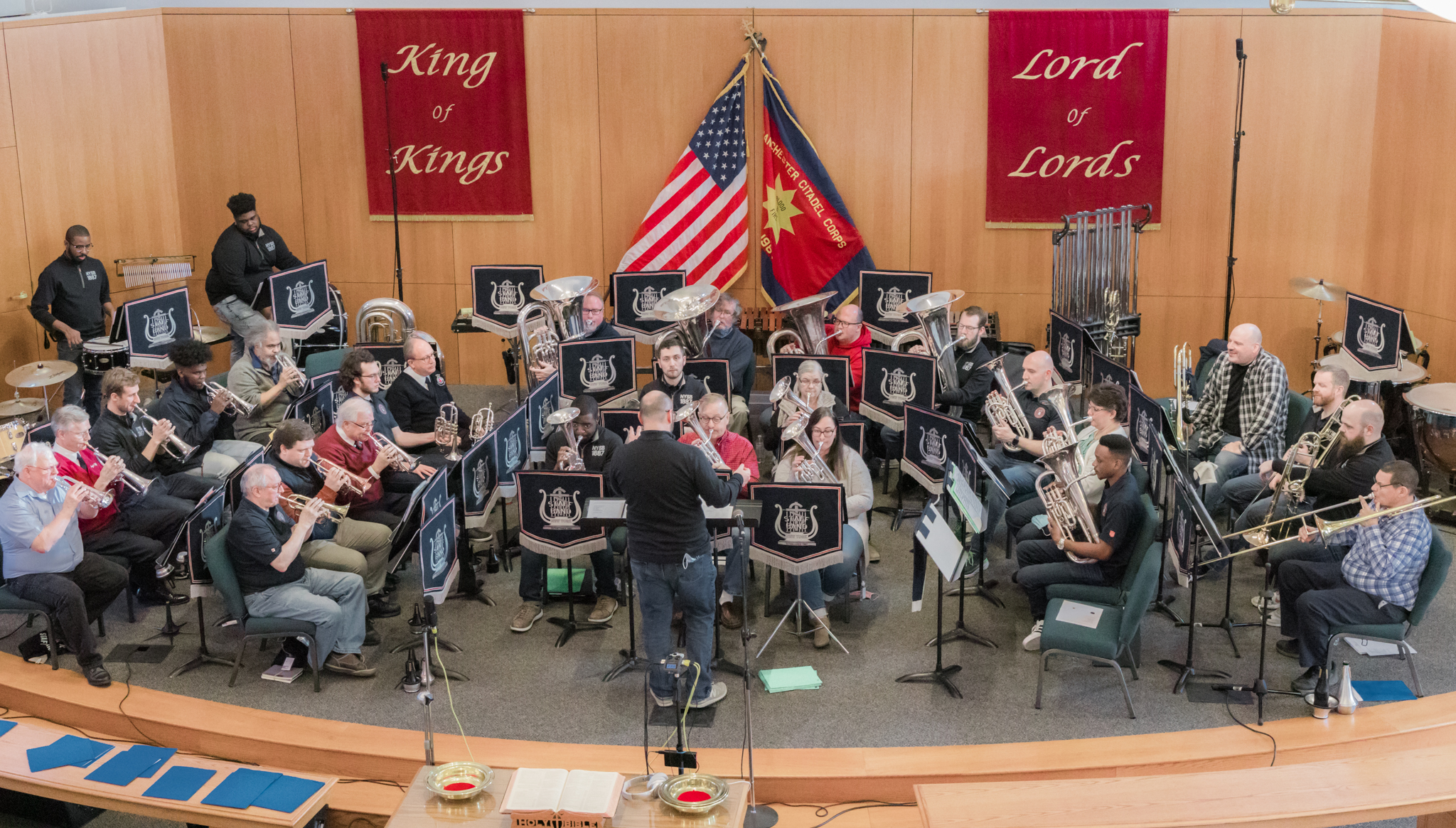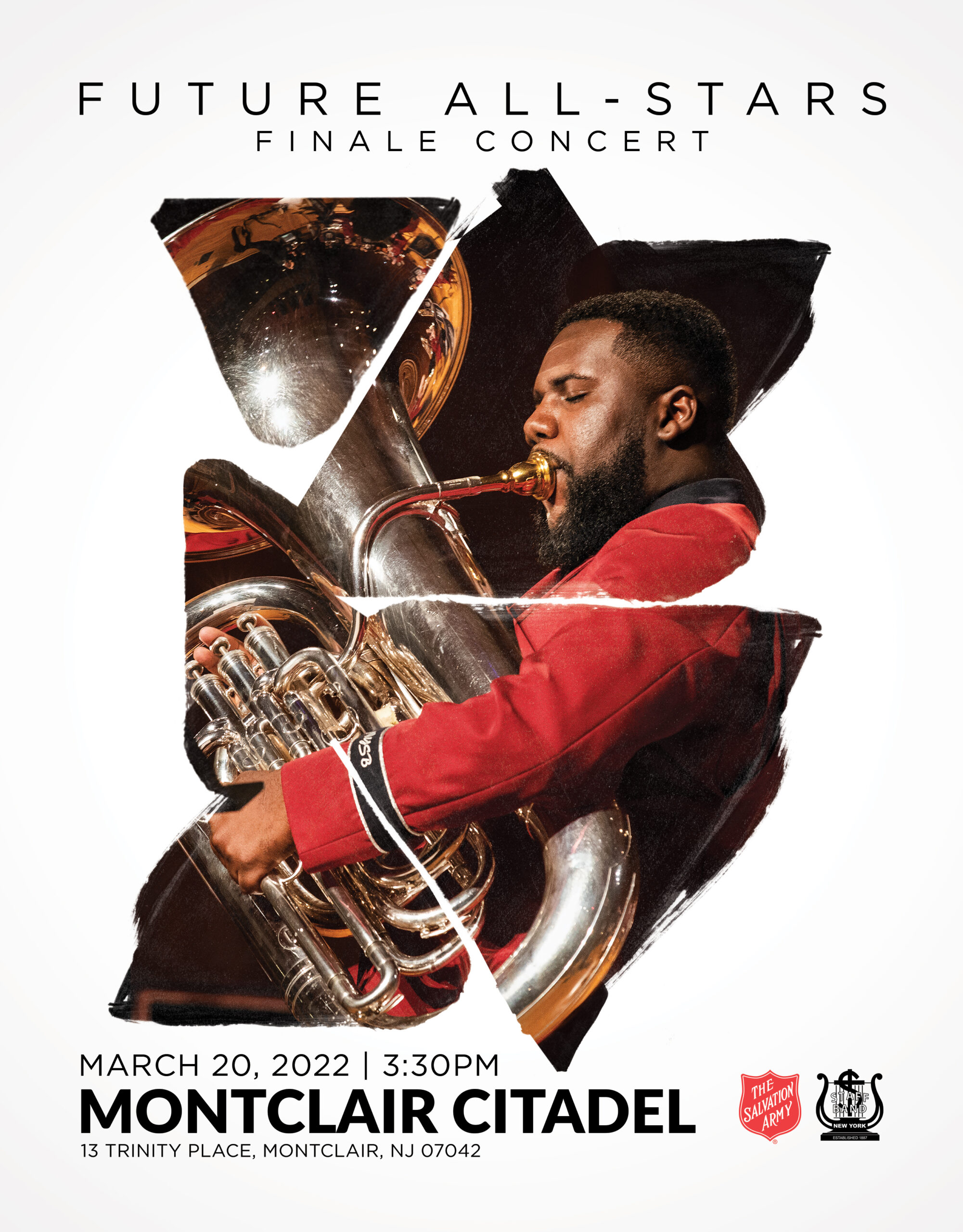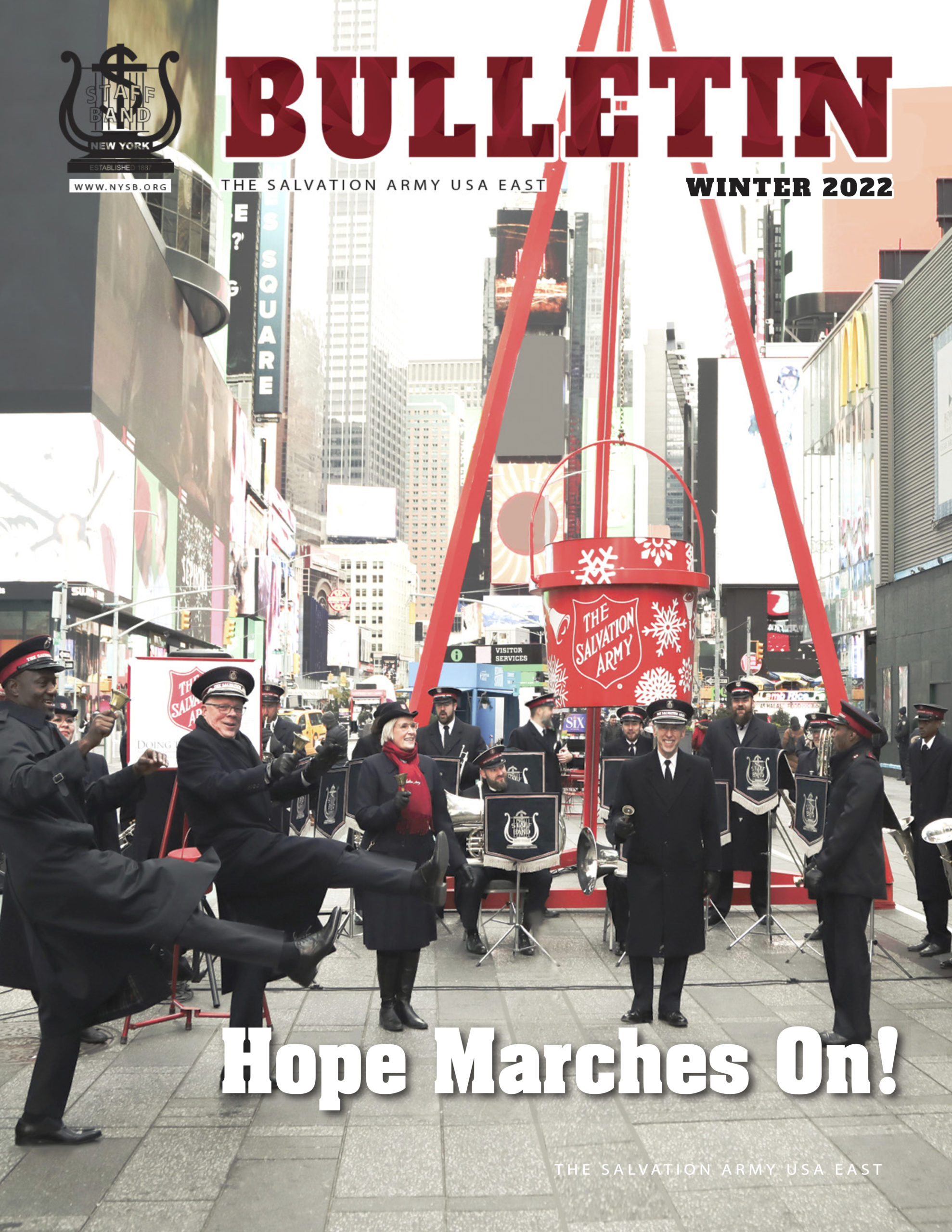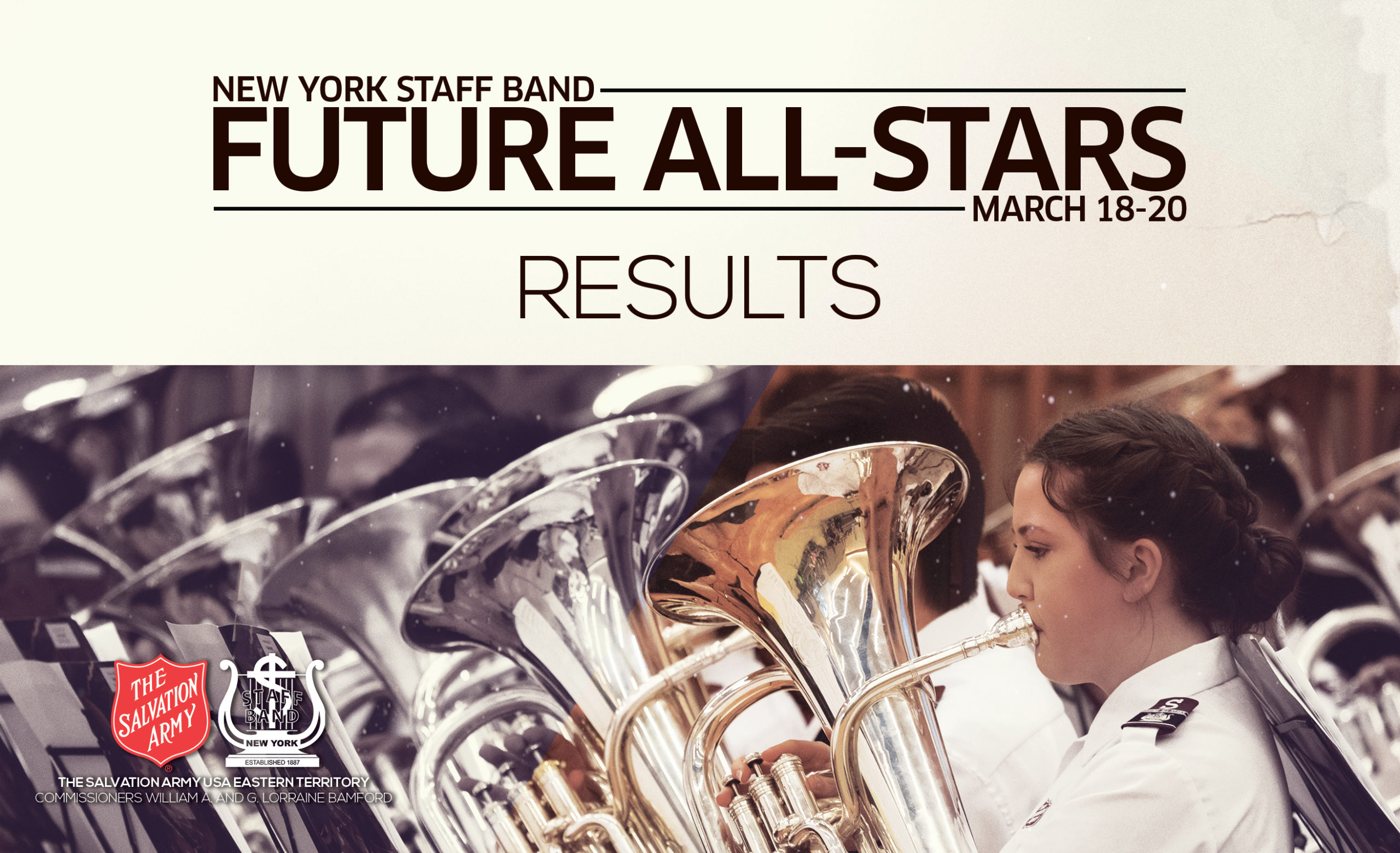The New York Staff Band’s latest CD, Easter Glory, is a garden full of flowers united by a single motif: that of resurrection. As such, it is a fascinating tour through uncommon repertoire that alerts the listener to persuasive new material while unearthing rare and distant classics that are more than worthy of resurrection themselves!
Our tour guide is Ron Waiksnoris, venerable Music Director of NYSB, who opens the CD with Kenneth Downie’s “Easter Festival Prelude” based on the leitmotive hymn of the album: ‘Christ the Lord is Risen Today’. Downie deftly deals with the hymn tune itself, as does the band, concluding with a surprising shift of key that lifts the work in the appropriate direction. For any brass band working an Easter service or event, this bright little opener is a must.
Cornet soloist, an SA star on North America’s East Coast, Derek Lance, produces a brilliant account of Marcus Venables’ scintillating “The Essence of Faith”. Constructed as a kind of mini-Concerto, Derek mines the trumpet-like aspects of the cornet in the two outer sections with considerable stentorian aplomb, most appropriate for the hymn “I sing the mighty power of God.” There is no lack of power here! Without losing something of the straighter orchestral sound he provides beautiful lines in the central section “Take my life and let it be, Consecrated, Lord, to Thee”. There is no sense of limitation in Venable’s handing of the hymn material here and it is hard not to imagine many SA and non-SA cornetists wanting to check this Maynard Ferguson-appropriate solo out. Soloist and band are on fire here.
Speaking of venerable, that great big band arranger for brass bands Mark Freeh delivers a stylish transcription of Ray Starling’s “Beneath the Cross”. Is there anyone arranging today that has such a great ear for what works in making a brass band sound “big” in the swing style? The strange introverted opening gives way to some tasty sounds in an item that would work in any number of concert programs, sacred or secular.
Having demonstrated their ease in a number of styles the NYSB settle down into Ray Steadman-Allen’s rarely heard and substantial “Logos” in three movements from 1979 (the same period as Victorian Snapshots: On Ratcliff Highway, surely his masterpiece). Steadman-Allen’s music often embodies a kind of mosaic-like technique, enabling his music to pass through varying sequences suggestive of a kind of ‘inner conversation’. Sometimes the moods between these moments, as here in the opening movements, can be almost contradictory. Such moments veer, sometimes turbulently, between very concentrated thought and almost profligate expansion of other ideas. Familiarity does not breed contempt in my experience of his music—the more you invest in it the more it gives back. (It might be interesting to hear the original narration for Logos that is not on this present recording.) It is certainly as if the distance—almost the ‘dissonance’—between the darker ideas and the hymn materials are not resolved in the first two movements (epitomized by the all-too-pat final chord of the second movement). It needs he extensive working out of the finale—a kind of development section in its own right—before the sudden irruption of the final Easter hymn really rings true and the darker ideas in the earlier music are truly exorcised. Fascinating music and brilliantly brought off by Maestro Waiksnoris and his intrepid team. A neglected work truly worthy of re-appraisal by musicians everywhere.
A trio of shorter, single, pieces follow, beginning with Christopher Wards beautifully telling soprano playing in Philip Wilby’s arrangement of Albert Hay Malotte’s “The Lord’s Prayer”. “See What a Morning” is Dorothy Gates’ take—via her arranging of a recent Easter song—on the ‘Celtic craze’ that gripped the world and brass band music in the late 90s and early 2000s. If, like me, you love Philip Sparke’s Hymn of the Highlands (to which Gates gives brief opening tribute) you will enjoy this. Norman Bearcroft’s nimble combination of hymn (‘There is a Green Hill Far Away’) and song (‘My Love is like a Red, Red Rose’) in Green Hills amply displays the skills of tenor hornist Timothy Ward. NYSB provide sensitive accompaniment throughout.
Perhaps the most surprising thing about Dean Goffin’s “The Challenge of the Cross” (part of a trilogy including “The Shadow of the Cross” and “Light of the World”) is its debt to Richard Wagner—that great Pagan atheist of the 19th century. However, like Sir Edward Elgar (and Anton Bruckner) before him, Sir Dean here translates Wagner’s shifting harmonies to underline the emotional response to the numerous hymn tunes he employs: a ‘Christianizing’ of Wagner, if you will. I am sufficiently intrigued to want to hear the whole trilogy together at some future point—ideally with the New York Staff Band playing as well as they do here.
Surely Philip Wilby’s transcendent “Wondrous Cross” was designed to provide the heart of this wonderful album. His absolute simplicity, yet beautifully conceived sequence of sounds, convinces that this recent piece is a ‘must have’ for every bands library. NYSB make a most eloquent case with superbly controlled playing. A total delight!
To conclude we have the music of a marvelous composer whose work, one suspects, has still yet to be truly measured even though he produced all of it in his too-short life. To hear Leslie Condon introduce his “Easter Glory”, and to weigh the total conviction of this most interesting composer, is an added gift indeed. (Thank God for the sound archives of the Star Lake Musicamp—how many other such treasures lie in those vaults?) The organic growth of both the music and the band in this piece is a joy to behold. Condon’s masterful unfolding of his musical ideas make the emergence of the Easter Hymn so inevitable (unlike Steadman-Allen’s where it’s final emergence comes suddenly as a much-needed relief). Easter Glory is a masterful work and I for one am very appreciative of Ron and NYSB giving it headline notice on this terrific album, to make us all aware of how grateful we should be for Condon’s gifts, and for those many others on display here.
by Dr. Stephen Arthur Allen





